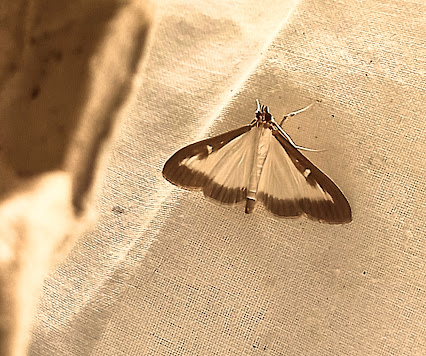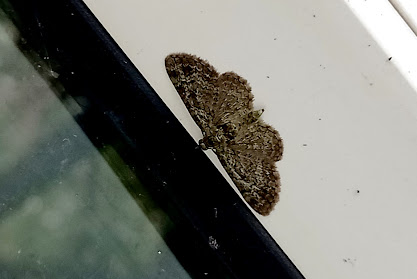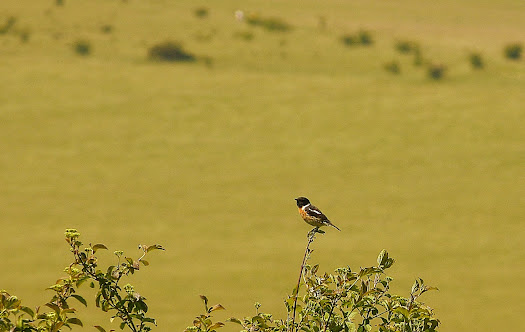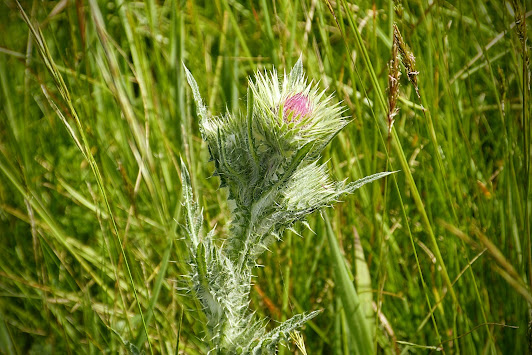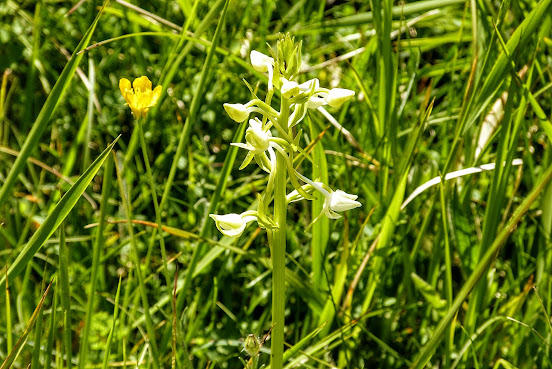Saturday 25th May 2024.
Martin Down is famous for many things, but the Marsh Fritillary has to be one of the most stunning butterflies it holds. Thankfully for us, there were many on the wing today.
What a day! Not only did I get some amazing moths by my Moth Box this morning, but a superb trip to Martin Down on the Hampshire / Wiltshire border with not only Geoff and Andy, but also joining up with Matt & Emma Parkes; a total of five pairs of eyes searching and finding some fabulous flora and fauna this fantastic site has to offer. On top of that, the weather was simply perfect, with blazing sunshine throughout most of the day and a nice breeze to keep the temperature just right. I simply could write chapter and verse on what we saw today, but I shall let a lot of my photos do the talking.
Above, the stunning Puss Moth. I never in a million years expected one of these amazing moths to arrive in my garden. I really felt privileged. Below, OK, not as stunning as the above moth, but a White-point in Spring is nothing to be sniffed at either.
The Moth Boxes:
I was up just after 5am this morning and still, thankfully, the local House Sparrows are leaving my moth box alone and not stealing a moth or two for their breakfast! My day kicked off with a stunning moth; it was my first Puss Moth ever in my garden and only my second ever (the last was by Andy’s moth box). The moth was perched nearby on our shed wall close to the moth box and I let the moth just rest there. What a stunning individual. There was also another first for the year, a White-point. This species is regular normally in the Autumn months, so to get one in Spring was exceptional for me. A total of 21 moths of 14 species were in my garden this morning which included the following:
- Puss Moth (New for Year)
- White-point (NFY)
- Willow Beauty 3
- Pale Mottled Willow
- Brimstone Moth
- Lime-speck Pug 2
- Bright-line Brown-eye
- Vine’s Rustic
- Shuttle-shaped Dart 2
- Garden Carpet
- Mallow Seed Moth
- Ruddy Streak
- Light Brown Apple Moth 2
- White Ermine 2
In Andy’s garden, there were much less number of moths present which included the following:
- Treble-lines 4
- Pale Mottled Willow
- WIllow Beauty
- Brimstone Moth
- Freyer’s Pug 2
- Common Plume
- Light Brown Apple Moth
Above, one of 4 Treble-lines moths by Andy's moth box.
Above, we found a few Nursery Web spiders basking in the sunshine on the Downs. Below, the large but beautiful Bloody-nosed Beetle.
Above, the caterpillar of the Lackey moth and below, this bush was one of several we found that was destroyed by the Spindle Ermine caterpillars.
Above, Mr Andrew Fisher about to get his coffee out and below, Matt and Emma Parkes arrive at our location.
Above, mating Mint Leaf Beetles on a Hawkbit plant and below, we found this Ashy Mining Beetle near its nest hole in the ground while were checking out the Burnt Tip Orchids.
Above, another pair of Mint Leaf Beetles mating; this time on a Rock Rose plant and below, the Springwatch cameraman checking on his equipment.
Martin Down, Hampshire / Wiltshire border:
Despite getting our directions slightly wrong in driving to Martin Down, we eventually arrived around 9.30am at the southern Car Park of Martin Down. Greeted with singing Skylarks, Blackcaps and Common Whitethroats; we were looking forward to a good day here enjoying all the site had to offer and what a variety of wildlife was present today. I suppose the only disappointment here was not seeing or hearing the Turtle Doves today, even though they were seen this morning by the lucky few early this morning. Matt and Emma had parked up in the north Car Park off Sellens Lane and eventually joined us around an hour later by the Fort area.
Above, Skylarks were abundant on the Downs and below, this female Sparrowhawk soared high overhead.

Despite not finding any Turtle Doves, there was still a great variety of birds to be seen here. Kicking off with the raptors, both Common Buzzard and Red Kite were seen in relatively good numbers and other raptors seen included a single female Sparrowhawk soaring overhead and several sightings of Kestrels. Skylarks were literally everywhere and the songs of them echoed all around us. From the main clump of trees and brambles near the car park, a Garden Warbler was singing its heart out though we never got a glimpse of the bird. Yellowhammers and Corn Buntings were in good numbers too, though the former easily outnumbered the latter by about 3 to 1. From the top of the mound looking west over to the Car Park, we had sightings of at least one male Bullfinch and a pair of Stonechats were nearby too. The latter species were abundant on the site with at least four, possibly five, pairs of birds on territories. I was lucky to pick out a distant Cuckoo flying east over the fields, but later in the afternoon, we saw a male bird calling nearer the north Car Park.

Above, a Corn Bunting was singing out on the Downs and below, I just about managed to grab a photo of this Tree Pipit on the northern end of the Downs.
Above, one of many Stonechats seen today on the site.
Common Whitethroats were abundant too along our walk and also two different Lesser Whitethroats were seen. On the northern area of the site, a Tree Pipit was holding territory again in the same area as last year and showed very well for us while we took a break to have lunch. A cameraman from the Springwatch team was also here and after having a nice conversation with him, he kindly pointed out a Small Elephant Hawk-moth for us, which is a very good ‘year-tick’ for this species. As we neared the northern Car Park, we had sightings of a Chiffchaff, Raven and our first Swallow of the day! It looked as though a passing Common Buzzard had strayed into a pair of the same species territory as one bird grabbed the other bird by the talons and both went tumbling down to the ground, but stopped just short and unhinged themselves then flew off. Very spectacular! Again, no sign of any Turtle Doves today, but a great selection of birds seen. Earlier today, when Matt and Emma made their way across the Down, they heard a Nightjar actually 'churring' during the daytime too! Apparently, the bird had been heard all week calling in the morning.

Above, a Brimstone butterfly nectaring on Bramble flowers and below, one of many Dingy Skippers seen today.
Above, Small Blue's were abundant also and below, a Grizzled Skipper nectaring on a Rock Rose plant.
It was also a superb day for butterflies with 17 species seen that included the infamous Marsh Fritillaries seen in good numbers. We never saw one around this time last year, but we easily saw at least double-figures today. Two Green Hairstreaks were also seen along with both Grizzled and Dingy Skipper in very good numbers. The following butterflies were recorded on our walk today:
- Large White
- Dingy Skipper
- Brimstone
- Green-veined White
- Small Heath
- Small Copper
- Painted Lady
- Marsh Fritillary
- Small Blue
- Peacock
- Green Hairstreak
- Brown Argus
- Grizzled Skipper
- Orange Tip
- Red Admiral
- Common Blue
Above, an Adonis Blue was one of around three we saw and below, at least two Green Hairstreak's were seen.
Above, a Small Copper on a Rock Rose plant and below, a Common Blue.
Not only butterflies were present in superb numbers, but also a good selection of day-flying moths too. The Small Elephant Hawk-moth was a good spot as mentioned, but my first ever Small China-mark moth, which was found on the walk back to the north Car Park. The following moths found as well:
- Common Carpet (New for Year)
- Silver Y
- Cinnabar Moth (NFY)
- Five-spotted Burnet Moth (NFY)
- Six-spotted Burnet Moth (NFY)
- Burnet Companion (NFY)
- Small China-mark (LIFER)
- Small Elephant Hawk-moth (NFY)
Above, one of several Cinnabar Moths seen today and below, Five-spotted Burnet Moths mating.
Above, we found an area with several Burnet Companion moths and below, the Small Elephant Hawk-moth that was pointed out to us by the Cameraman.
Above, my first ever Small China-mark moth.
Other interesting insects we came across included several Nursery Spiders basking in the sunshine on large leaves; my first Red-tailed Bumble Bees including a big Queen, plus great views of Ashy Mining Bees going into their nest hole on the ground near the Burnt-tip Orchids. Mint Leaf Beetles were in good numbers and a Bloody-nosed Beetle was found by Geoff walking along the footpath. A Lackey Moth caterpillar was also found by Geoff low in the grass. Having Geoff along is always a bonus as we glean the info off him to identify a lot of the plants that I have not got a clue with. The Orchids were abundant in places and this year, we had some gorgeous Burnt-tip Orchids of which Emma showed us where they were. There were also some fellow Naturalists present that were taking photos of not only the plants, but also the insects present too. With Geoff's help, we saw the following Orchids:
- Common Spotted Orchid
- Fragrant Orchid
- Burnt-Tip orchid
- Greater Butterfly Orchid
Above, Yellow Rattle and below, a Musk Thistle.
Above, Goatsbeard with a small Bee for company and below, Common Spotted Orchid.
Above, Rock Rose and below Horseshoe Vetch.
Other plants that Geoff pointed out included Goatsbeard, Rock Rose, Field Fleawort, Musk Thistle, Crosswort and both Horseshoe and Kidney Vetch plus many other more common plants. It's always an education when Geoff picks out not only the name of the plant but also a bit of information about the plant itself. Again, it's a good way of learning from the experts by simply pointing out and asking questions.
Above, Fragrant Orchid and below, Burnt-tip Orchid.
Above, Field Fleawort, which is a scarce plant and below, the gorgeous Greater Butterfly Orchid.
When we finally reached the north Car Park, Matt and Emma kindly offered us a lift back to the south Car Park of which we were so grateful. It was now 4.30pm and I knew I was in for a bad time for getting home late and it would have taken us easily another hour to get back to the car and my feet were ‘barking’ too! What a superb day and I could easily spend all week at this site, picking out various insects, plants and birds. We heard that a Red-backed Shrike had been found on Thursley Common, Surrey, this morning; but the lure of this place was far more enticing with all its wildlife it has to offer. Great day, great company and so glad to be alive to witness it all.





